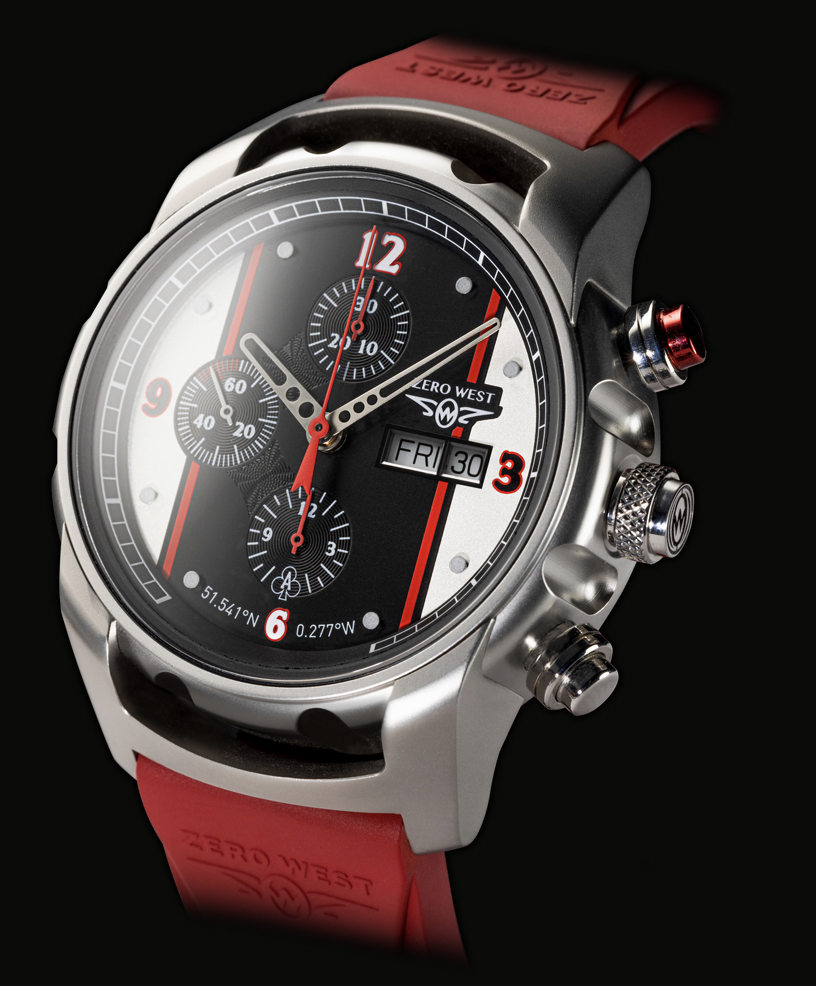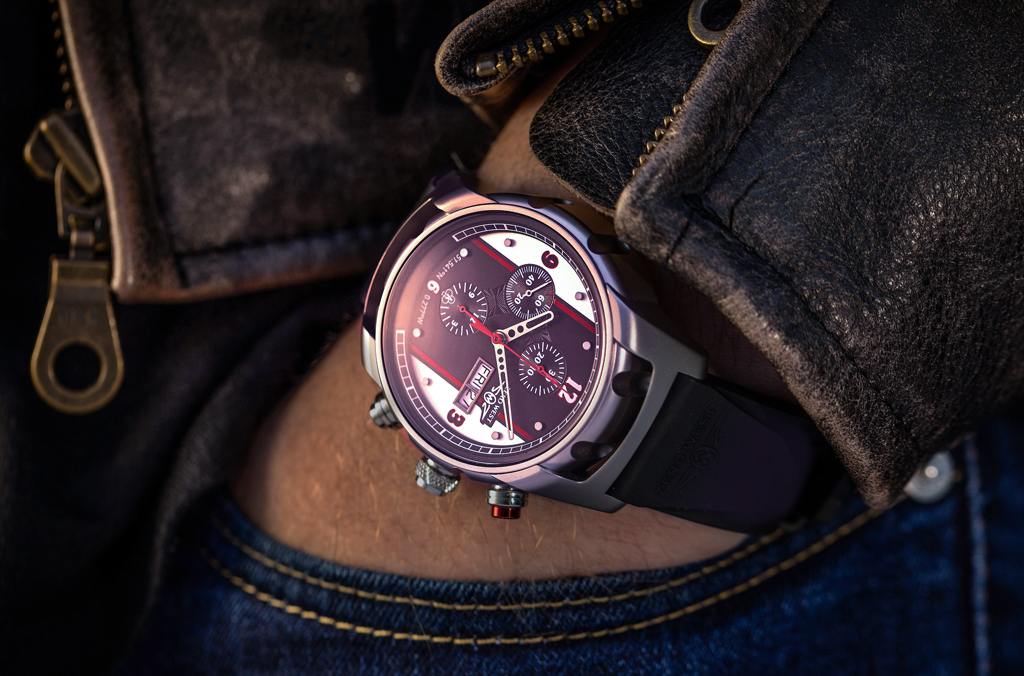Design Attributes
- Latitude and Longitude reference the Ace Cafe
- Fuel tank stripe, dial design
- Period numbers referenced from race plates
- Full exhibition watch back with custom rotor
- Water resistance: 10ATM (100m) 100% tested
Case
- 44mm diameter 316L stainless steel billet machined matt silver case
- Match machined, matt silver 316L stainless steel DSL lugs
- Polished and engraved 316L stainless steel back with exhibition sapphire crystal Winding Crown & Pushers
Main Crown
- Screw lock & sprung diamond knurled & polished 316L stainless steel with triple seal technology
- Chronograph Pushers: Sprung & double sealed pusher at 2 o’clock (start/stop red PVD over polished stainless steel) & 4 o’ clock (reset polished stainless steel)
Crystals
- Front: Custom double curved domed sapphire glass with blue AR coating on the internal surface
- Rear Exhibition: Custom curved domed sapphire glass with blue AR coating on the internal surface
Movement
- Valjoux 7750 30mm 13.25 calibre 28,800vph,
- 25 jewels
- Incabloc shock system
- Self-winding custom ball bearing rotor
- Day/date & 3-plane cam chronograph functions
- Power reserve ~48 hours
- Water resistance: 10ATM (100m) 100% tested
Dial
- Embossed & metalised design with block cylindrical applique indexes
- Sweep seconds sub-dial & minute & hour Chronograph sub-dials
- Black steel dial ring with seconds indexes
Hands
- Skeletonised steel satin hour, minute & seconds hands
- Red Chronograph function hands
Dimensions
- 44mm diameter
- 16.3mm thick
- 22mm lug width
- 50mm lug to lug pin spacing
- Weight 120g including strap
Strap
-
22/20mm Zero West custom military and aerospace grade cross-linked fluoroelastomer rubber. 1 fixed and 1 sliding keeper
-
Reverse sculptured relief
-
Matt silver 316L stainless steel steel buckle with etched ZW logo
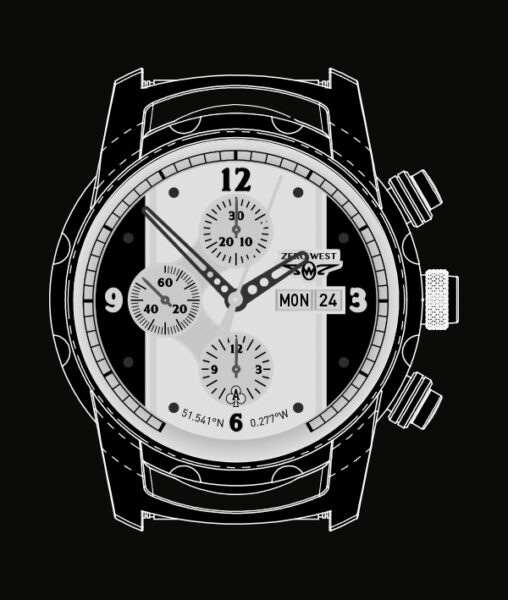
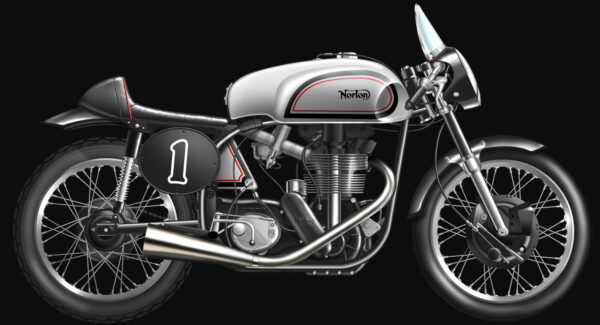
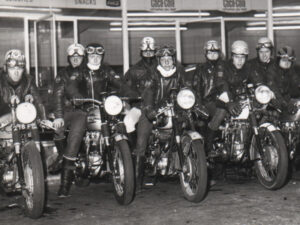
Post-WWII 1950’s Britain witnessed a massive shift in urban culture following the social hardships endured during the recent world war. During the 1950’s there was a steady return to prosperity and as a result, the next generation began to rebel and free themselves from their post-war shackles.
Café Racers embodied a mix of carefree rebellious youth fueled by the new free rock’n’roll movement. This urban bike scene was borne out of the riders who frequented London’s Ace Café.
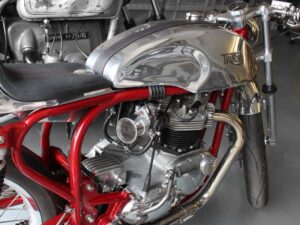
Arguably the Café Racer motorcycle developed out of the Isle of Man TT scene. With keen bike enthusiasts of the post war 1950’s emulating their racing heroes, the TT street racing subculture spilt onto British streets. Stock road bikes of the day were individually modified into hybrid machines. They were engineered to be low on comfort, high on style and quick….very quick!
Motorcycles were stripped down to the bare essentials and styled to mimic the contemporary edge of the Grand Prix road racer, with minimalist bodywork and tuned engines. They sported low mounted clip-on handlebars, single racing seats and elongated fuel tanks to reduce wind resistance and improve handling. It was also not unusual to fuse two bikes together and the 1960’s “Triton” for example was a stylish and efficient combination of a Triumph 650cc parallel-twin engine mounted in a Norton featherbed frame. It handled well and went well and was the epitome of a British Café race bike.
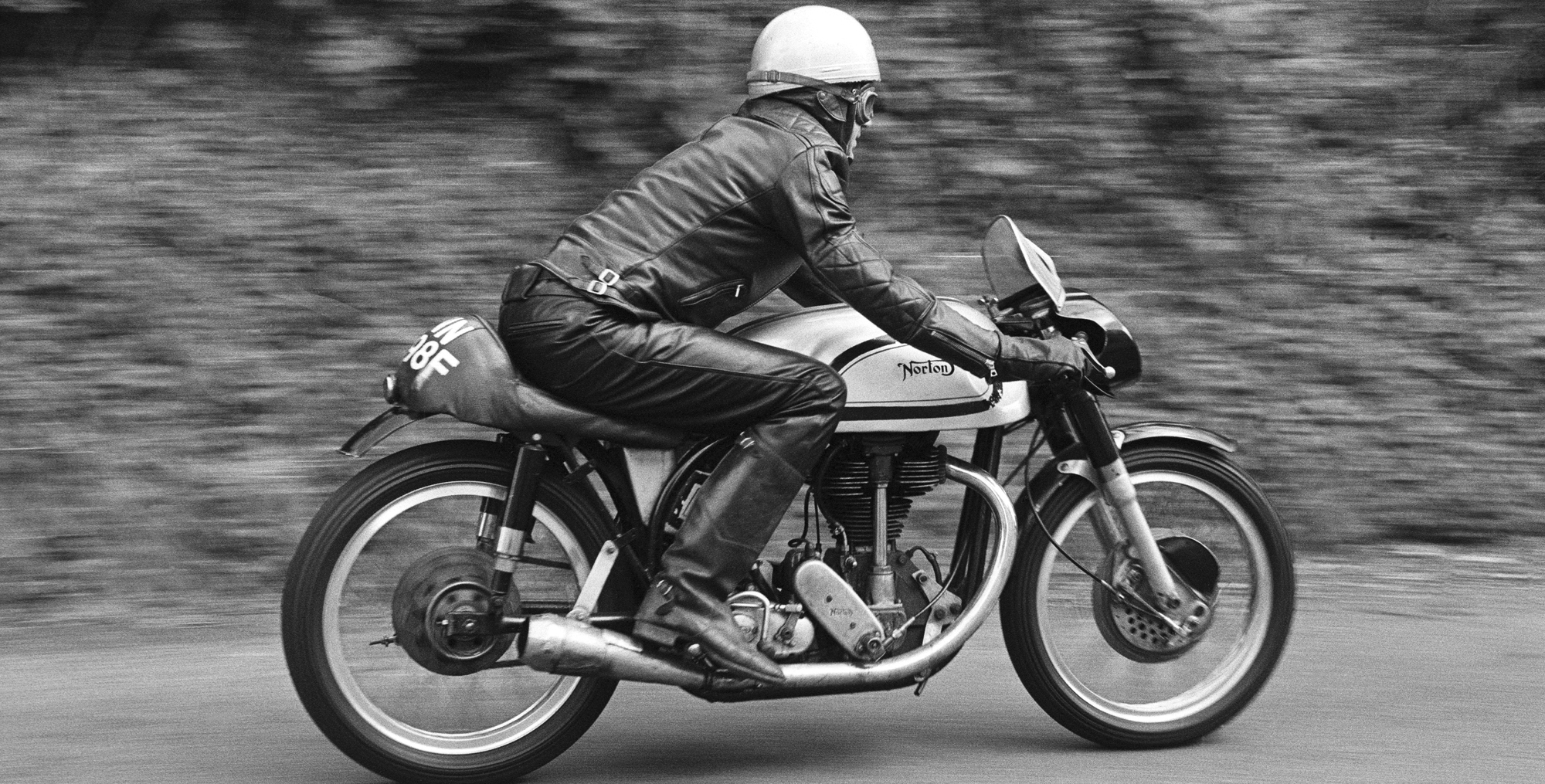
TIME: 20/10/1950 – PLACE: 51.541°N – 0.277°W
